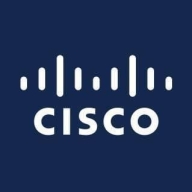

VMware Aria Operations and Cisco UCS Director both compete in the infrastructure management category. VMware Aria Operations has the upper hand due to its comprehensive real-time analytics, despite some usability and integration challenges noted by users.
Features: VMware Aria Operations offers comprehensive monitoring, real-time analytics, and predictive capabilities to optimize infrastructure performance. It supports dynamic thresholds and integrates well with other VMware products. Cisco UCS Director provides a robust orchestration platform, automating data center operations, with support for multiple cloud environments.
Room for Improvement: VMware Aria Operations users would like more intuitive usability and better integration with various data sources. Cisco UCS Director users recommend improvements in third-party integration, a more user-friendly interface, and reducing setup and configuration complexity.
Ease of Deployment and Customer Service: VMware Aria Operations supports on-premises, hybrid, and public cloud deployments, offering flexibility across infrastructure setups. Its customer service is noted for being highly responsive and effective. Cisco UCS Director is typically deployed in on-premises environments and has mixed reviews regarding its technical support quality.
Pricing and ROI: VMware Aria Operations is perceived as expensive, but many users report clear ROI through enhanced infrastructure efficiency and reduced downtime. It offers various licensing options tailored to organizational needs. Cisco UCS Director is noted for its cost and complexity, with concerns about its pricing alignment with provided value.
| Product | Market Share (%) |
|---|---|
| VMware Aria Operations | 5.7% |
| Cisco UCS Director | 1.8% |
| Other | 92.5% |

| Company Size | Count |
|---|---|
| Small Business | 4 |
| Midsize Enterprise | 1 |
| Large Enterprise | 11 |
| Company Size | Count |
|---|---|
| Small Business | 64 |
| Midsize Enterprise | 62 |
| Large Enterprise | 278 |
Cisco UCS Director enables automated delivery of physical and virtual data center resources, empowering data centers to move at the speed of business.
VMware Aria Operations is a high-ranking virtualization management and cloud management tool that automates and simplifies IT management to the applications it supports. It achieves this through full-stack visibility from physical, virtual, and cloud infrastructure. The product allows users to enable self-driving IT operations management across private, hybrid, and multi-cloud environments. This is conducted with the unified operations platform that delivers continuous performance, capacity and cost optimization, and integrated compliance through artificial intelligence (AI) and machine learning (ML), and predictive analytics.
VMware Aria Operations Use Cases
VMware Aria Operations has several use cases, some of which include:
VMware Aria Operations Features
The product has various features which users can utilize. Several of the features that the 2022 version of VMware Aria Operations introduced include:
VMware Aria Operations Benefits
VMware Aria Operations brings various benefits to the organizations using it. Among them are the following:
Reviews from Real Users
Mohamed N., a tech lead VMware support engineer at a tech services company, appreciates VMware Aria Operations because it is easy to use, stable, and support is always available.
Mojtaba K., a senior system administrator at a comms service provider, values VMware Aria Operations due to the fact that its dashboards give you a glimpse of what is really going on in your virtualized environment.
We monitor all Cloud Management reviews to prevent fraudulent reviews and keep review quality high. We do not post reviews by company employees or direct competitors. We validate each review for authenticity via cross-reference with LinkedIn, and personal follow-up with the reviewer when necessary.